BAUHAUS MUSEUM, VESSEL COLLECTIVE
Location: Dessau, Germany
Type: International Competition, First Prize (1 of 2)
Structure: Concrete base and timber lattice frame structure clad with sintered glass tiles
Year: 2015
Team: Sina Özbudun, Isidoro Michan, Aree Rho, Rajika Maheshwari, Kevin Pazik, Tyler Kvochick, Ryan Roark
Consultants: Misako Murata, Landscape-Florian Gauss, Structure (Teuffel Engineering Consultants)-Ben Shepherd, Environmental (Atelier Ten)
Vessel Collective
A matrix or an object, repeated module or singular figure, technological or primitive: our proposal for the Bauhaus Museum Dessau fluctuates between these pairs in an unresolved tension. This lack of resolution reflects the multiplicity of understandings of the Bauhaus. It was a school, a social collective, an ideology, a body of artwork, a workshop for industry, and the fount of one of western culture’s most enduring modern design legacies. To reduce this history to only one aspect is to diminish the rich complexity which is the Bauhaus.
Our proposal for the Bauhaus Museum Dessau is designed as a collection of individual masses aggregated serially on a grid. We call these objects “vessels” as they allude to the crafted object of a vase or volumetric container. The vessels hover above the site on trunk-like legs, creating a light touch in the park that also allows passage underneath. The bellies of the vessels swell to overlap each other creating an open continuous floor plan that connects the entire museum with a single floor. These combinations allow the building to fluctuate character between a huddle of singular objects, a sinuous coil of circulation continuity, and a matrix of gridded repetition. Each attitude is at odds with the others, a productive tension resonating through the design.
The vessels are similar in geometry, formed only from circles and squares, but as they collect, they rotate, mirror, and fuse to create a varied figuration on the exterior and a variety of different spatial volumes on the interior. The intersected fusion of these volumes rises toward light nozzles equipped with diffusers that bounce and direct sunlight. The fusions vary from one to four joined vessels and change direction based on solar orientation. The gallery experience alternates between an open flexible matrix and a sequence of individual distinct volumes, a mash-up of the historical typologies of the free-plan and enfilade, offering a new hybrid of exhibition possibilities.
The exterior of the vessels is clad with small dimension sintered glass tiles made from recycled car windshields. The tiles are laid out through a digital scanning of a graphic pattern, breaking and sorting color to find a matching tile per pixel; these are then robotically assembled into sub panels, which are numbered and fit together to cover the surfaces. The surface effect is an optical fusion into an apparent solidity as a single vessel. This cladding is a mosaic in both the literal construction and the pixel raster of image mediation technologies, an update on the relations between craft and technology prevalent within the Bauhaus experiments with the crossings of material, technology, craft, and abstraction.
Auf Deutsch.
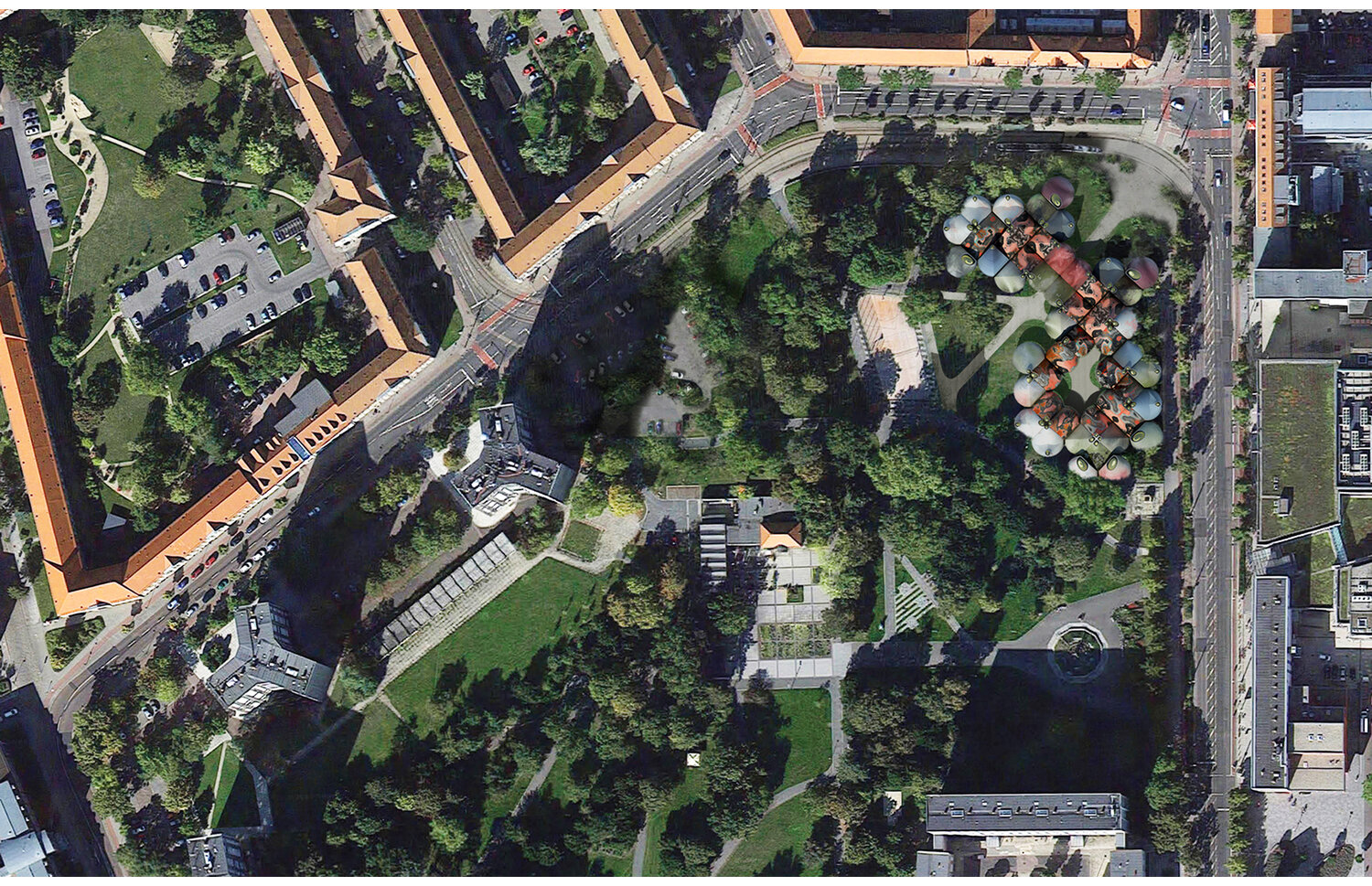
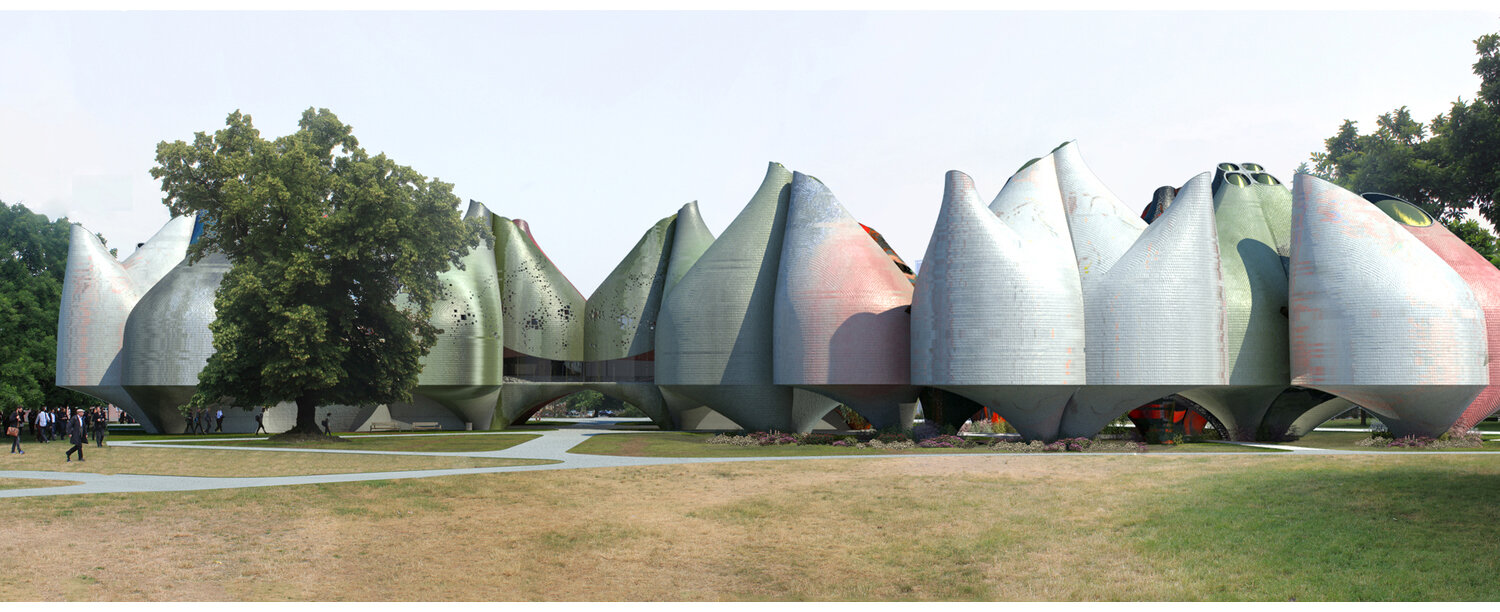
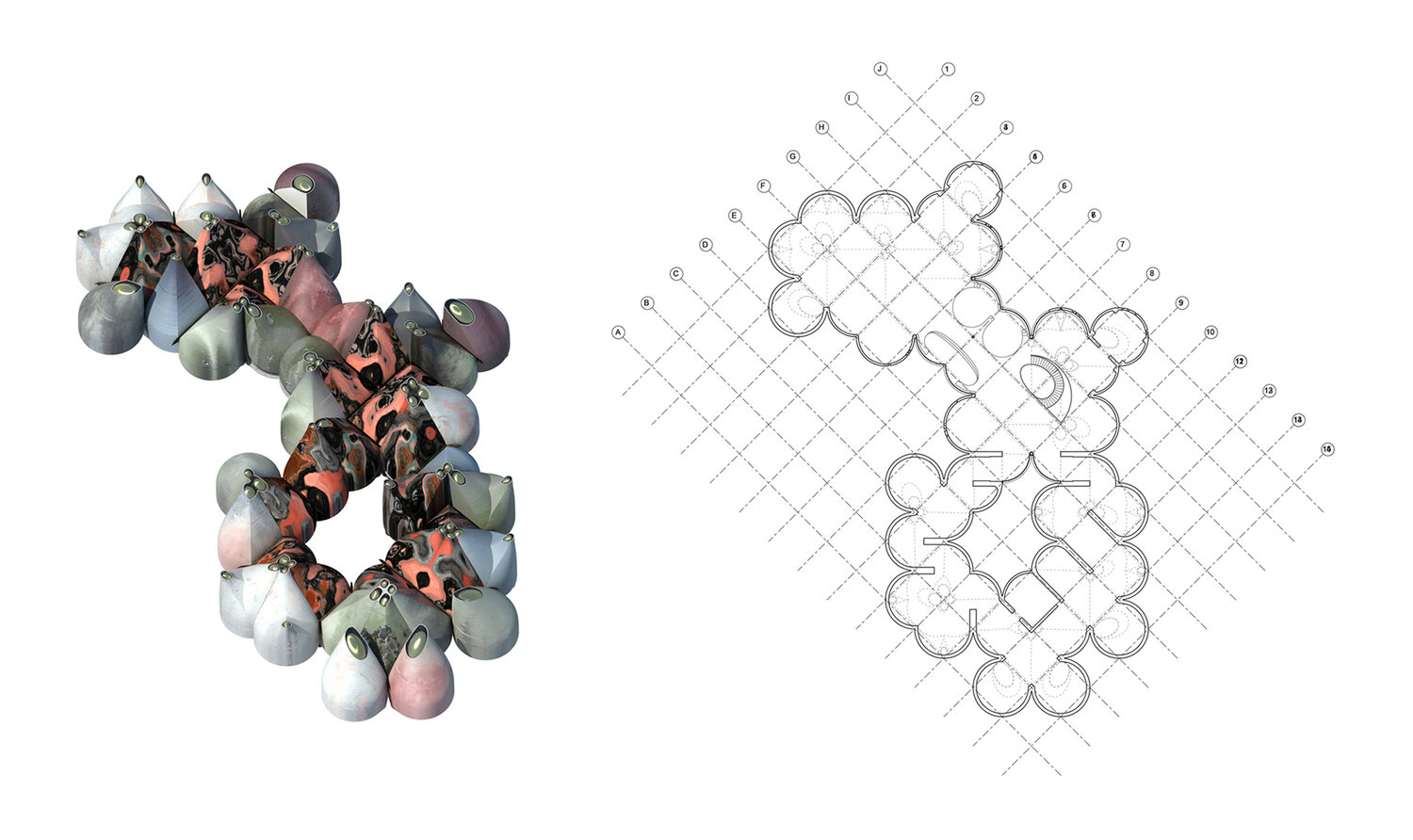
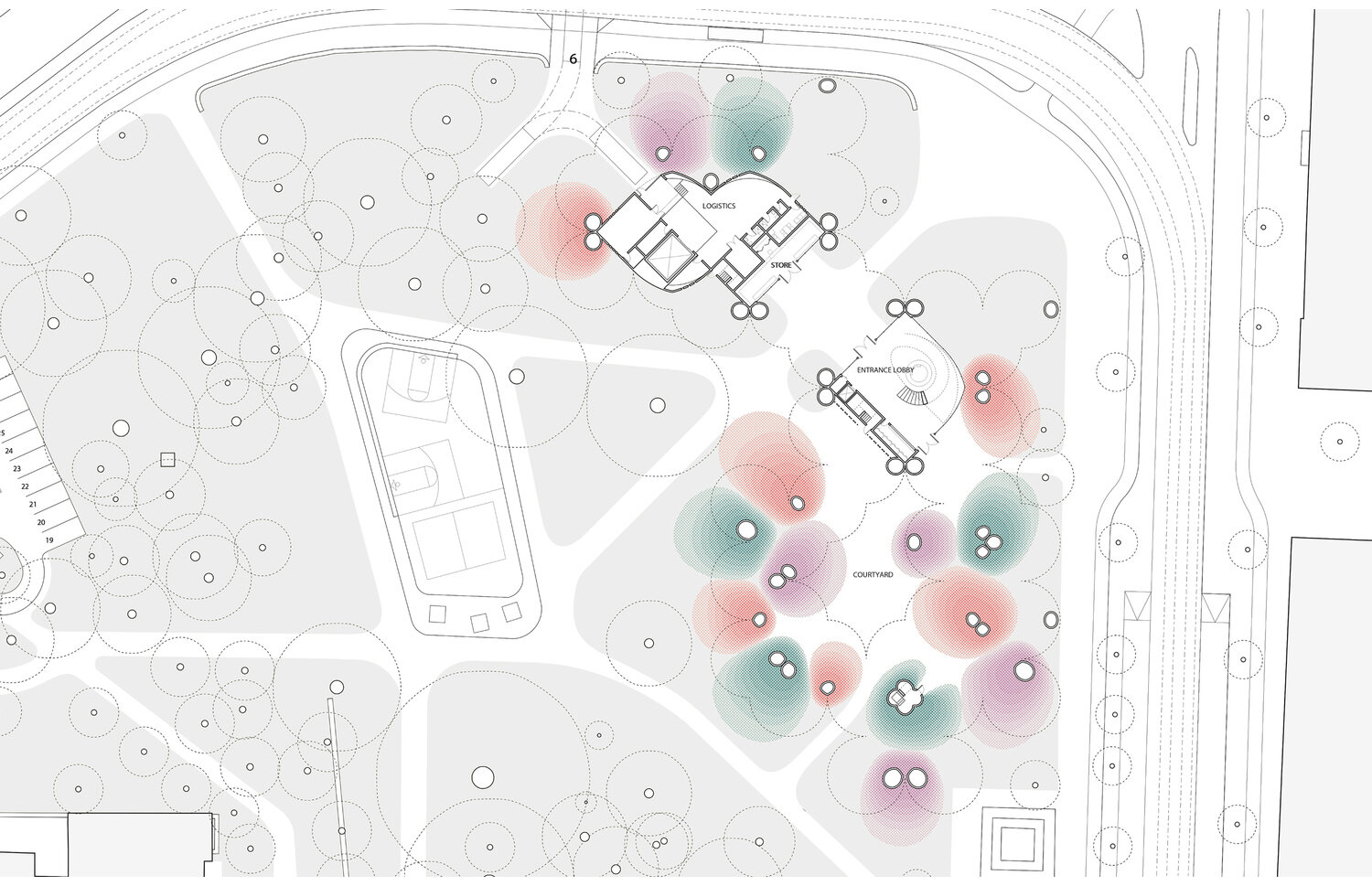
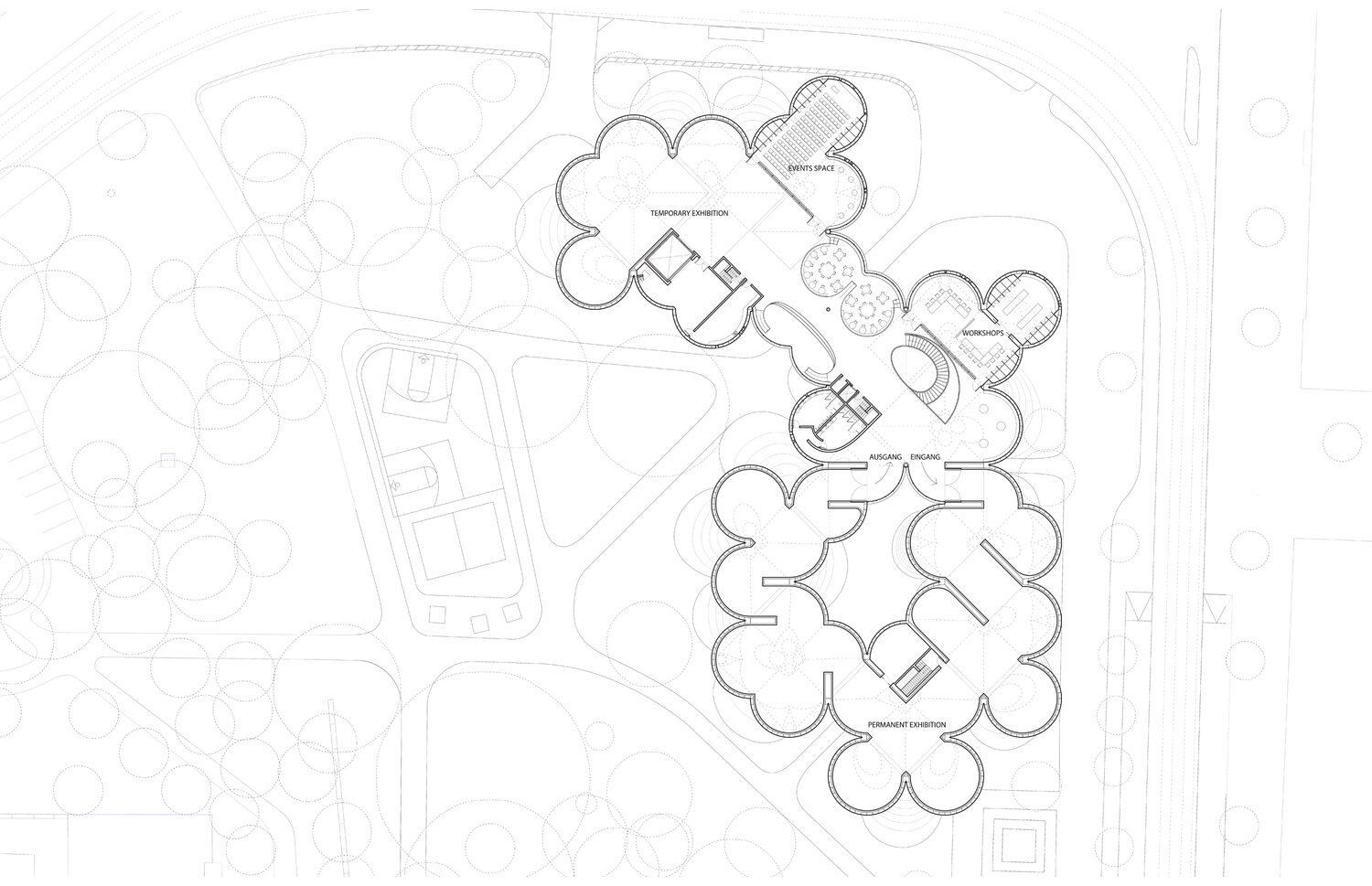
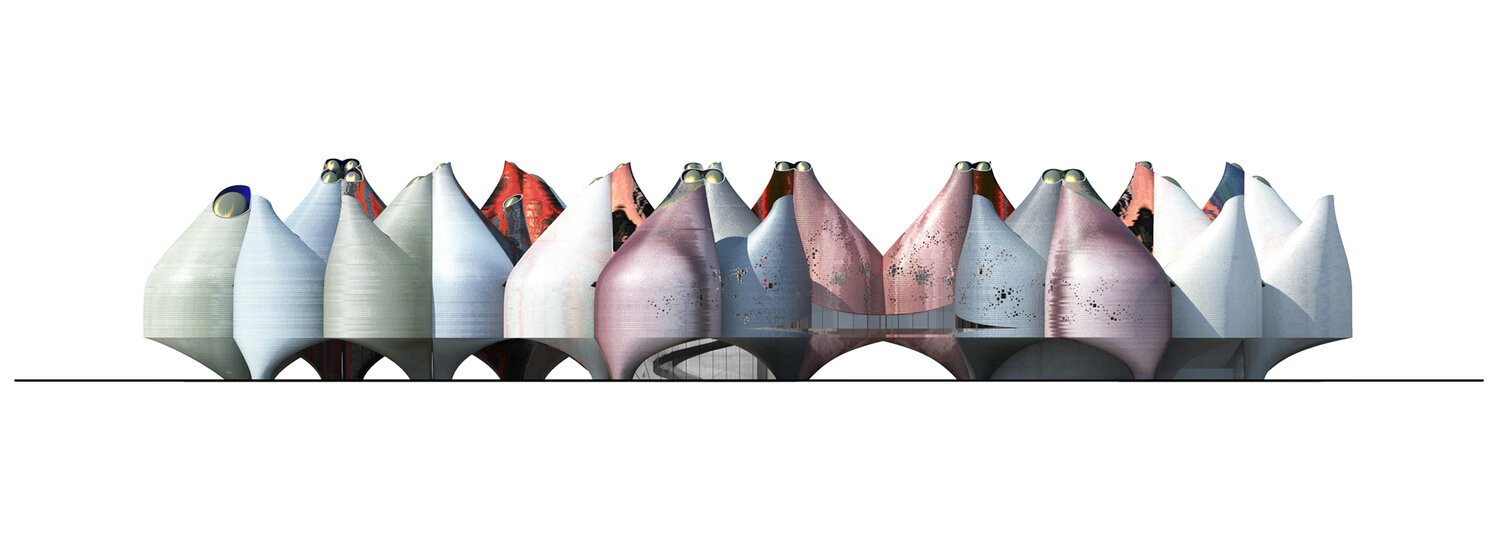
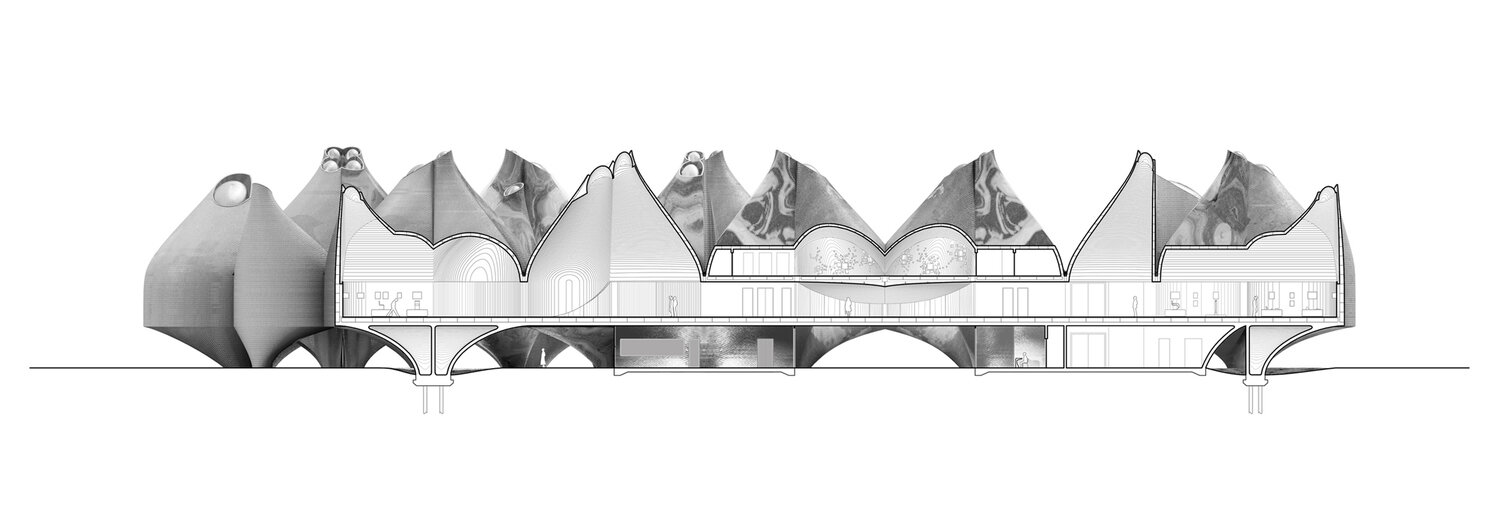
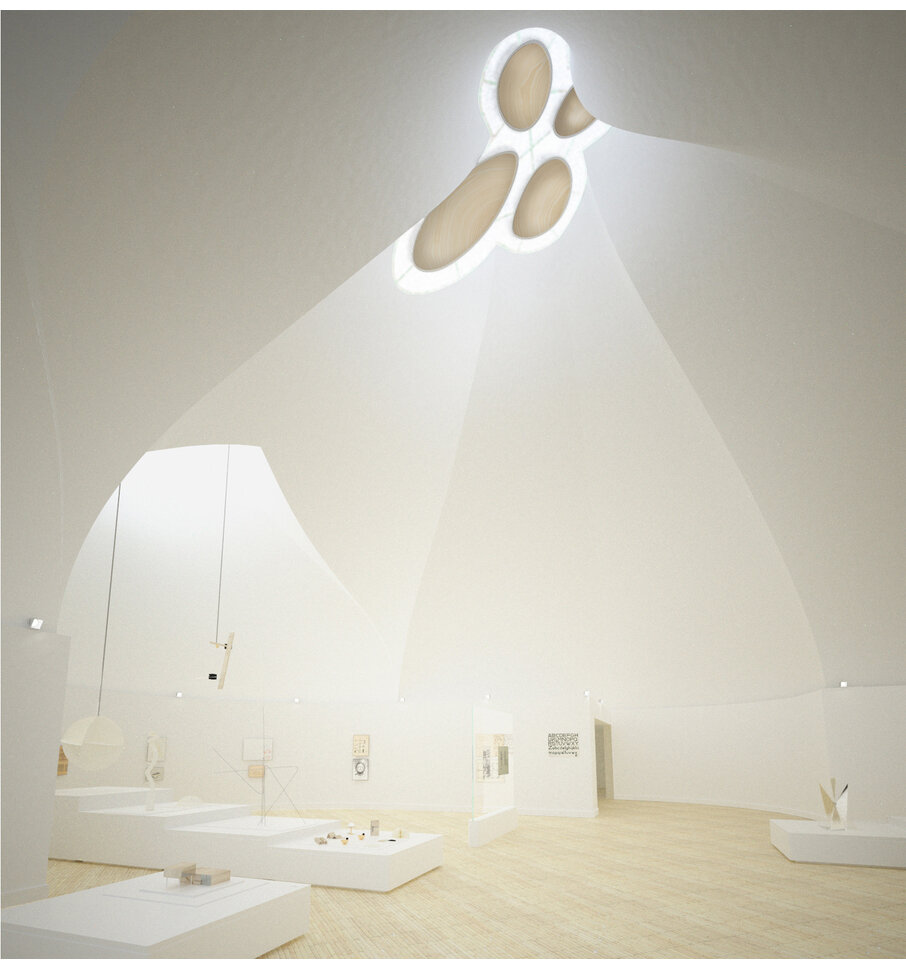

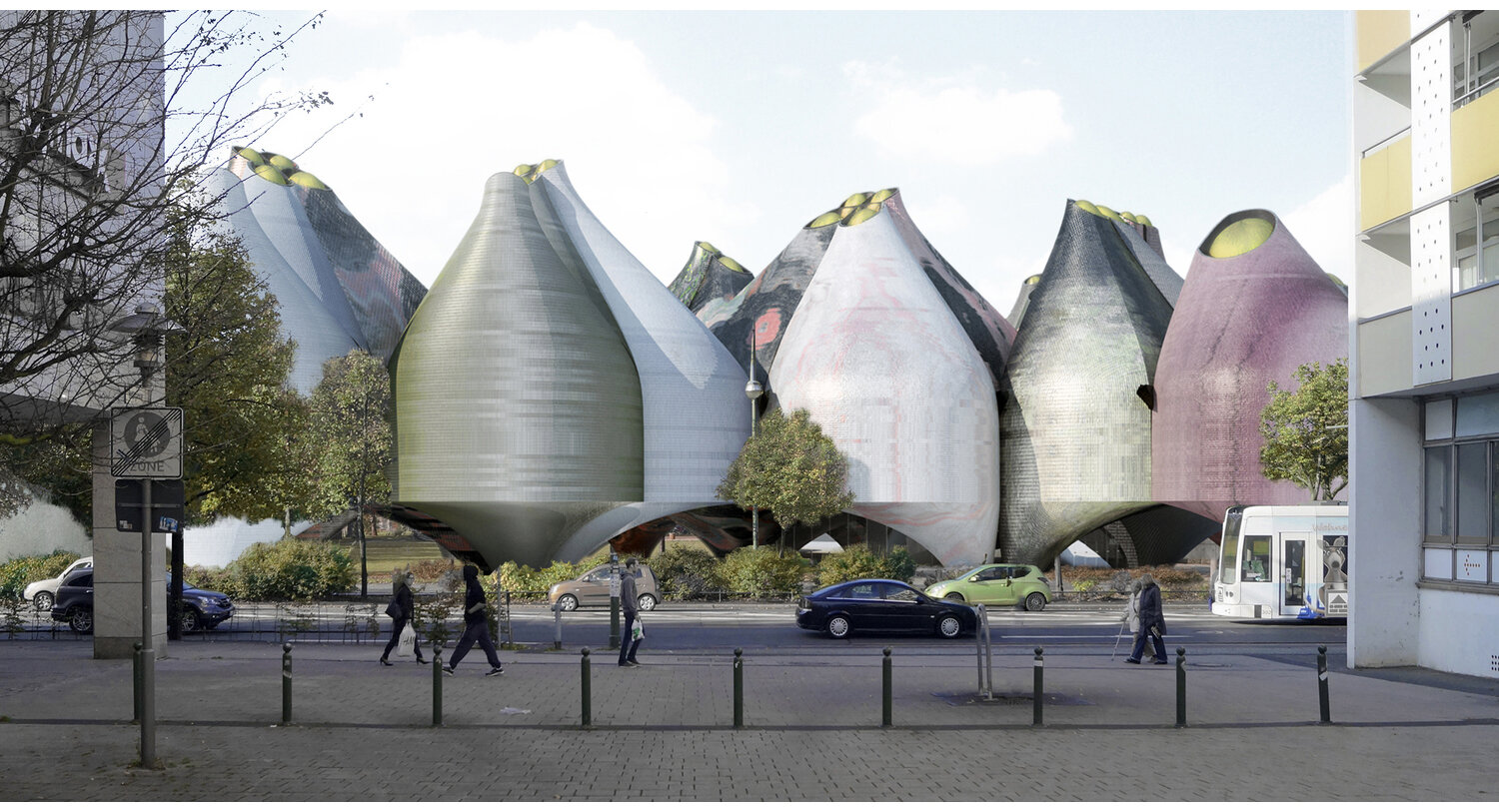
© All content © Young & Ayata
